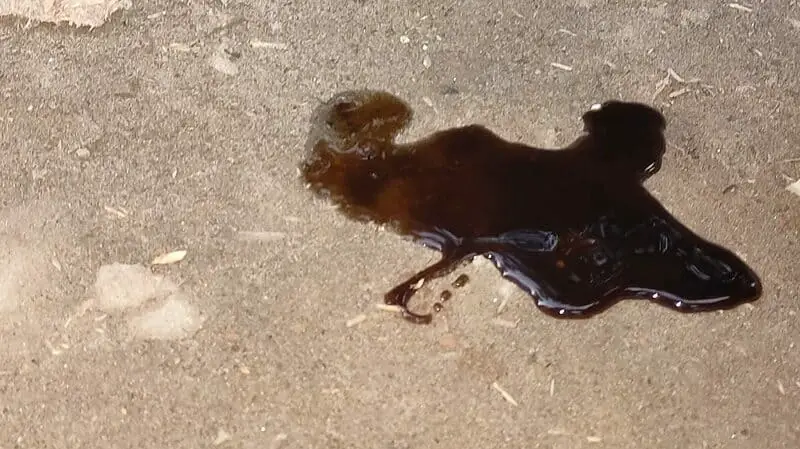I think everyone relating to the engine knows about the importance of engine oil, it is a kind of blood of the engine. And so that, to perform accurately, the oil needs to be authentic & clean. In this article, we will discuss Clean & dirty oil. You may have heard about the differences between clean and dirty engine oils. But what exactly is the difference between the two?

Differences between Clean VS Dirty Engine oil:
In the first place, clean oil is amber or yellow, some oil types also would be crystal in color. Dirty oil is a dark color. You can tell the difference by the oil’s viscosity and color using a dipstick. Dirty oil has more impurities. Because it has a lower viscosity, it can accumulate particles and become corrosive very fast. The dirty oil also loses its ability to protect your engine from the elements when it gets hot. This can lead to extended engine wear and breakdown. So, an oil change is very important for your engine before the dirty engine oil causes harm by overheating, high oxidation, metal parts wearing, or filter clogging.
Hopefully, all of you got this, before overdue oil change symptoms you just need to do an oil change with proper clean oil. The oil brand does not matter but they must be actual in grade and clean. Now Let’s discuss the Dirty engine oil symptoms
Dirty Engine Oil Symptoms:
There are several ways to determine the condition of your engine Oil.
- Examine the dipstick First, look at your dipstick (the stick that indicates the amount of oil in your vehicle). If you notice it’s stained (dark or even black) the car is in need of a fresh oil change.
- knocking sound coming generated by the engine Also, you could hear a knocking sound or other sounds emanating from your engine that was not there prior. This is due to wear and tear on pistons, as well as other parts of the engine that require oil to function correctly.
- Exhaust that is smokier Also looks out for black exhaust fumes more than usual coming from your tailpipe when driving it’s another indication that something is wrong with the current amount of oil.
What does dirty engine oil look like:
Engine oil color & viscosity change with oil life because due to lubricating of engine components additives degrade, and some bad particles are added for engine wearing. So first of all dirty oil must be thick & black. The important thing is that dirty oil will be thick but not vicious. If you check the oil with your finger you will not feel sticky like clean or new oil.
What should we do with dirty Oil:
If you want to contribute to your environment, you need to recycle dirty oil to make Mono grade useable engine oil. To do this you can try to find the oil recycler near you & sell dirty oil to them. For this, you need to collect all the dirty oil and stock it in a safe drum. The used dirty oil also can be used in a very small amount with diesel fuel after filtration. This diesel fuel is generally used in heavy-duty diesel engine oil. On the other hand, dirty oil also can be used in some household applications like home heating units.
Dirty Oil Characteristics:
There are some technical characteristics differences in clean vs dirty engine oil. And so that you will feel differences in Good oil vs bad oil car. Mainly the parameters that differ in dirty oil from clean oil are:
- Oil TBN: Total base number(TBN) always decrease in dirty oil or used oil. when the TBN number comes at 50% of the clean oil then it should be treated as spoiled dirty oil. But for very special cases TBN’s number of old engine oil may increase in Genset engines.
- Oil TAN: Total Acid number (TAN) of old oil increases daily as TBN depletion in dirty oil & also for by-product oxidation.
Also, some other characteristics such as oxidation, nitration, etc also make changes in dirty oil day by day.

How Do You Know, Your Engine Oil Is Dirty?
An experienced mechanic can tell when the oil in your engine is dirty. But you may also be able to spot some signs of dirty oil on your own by paying attention to the color & viscosity of the oil.
Brand-new engine oil is typically a translucent amber color, similar to the color of honey. After adding new oil, it circulates through the engine block to lubricate parts, reduce heat, clean the engine, and work against wearing and corrosion. Over time oil can become contaminated, darker, and thicker. Such changes in your oil’s properties may prevent it from working as it should!
As time goes on, oil can change colors. Eg, dark brown or gray engine oil with a milky or foamy consistency could be a sign of contamination from a coolant leak or long-time engine idling. On the other hand, excessive oil reddening would be a symptom of there’s an automatic transmission fluid leak.
Final Word:
I hope, by this article, you learned a lot about dirty vs clean engine oil. So all of you should pay attention to the dirty oil change to keep your engine fit. you can do this by yourself with the help of an oil dipstick or an experienced technician. But never neglect overdue oil change symptoms!
Read Also: How does oil get dirty
